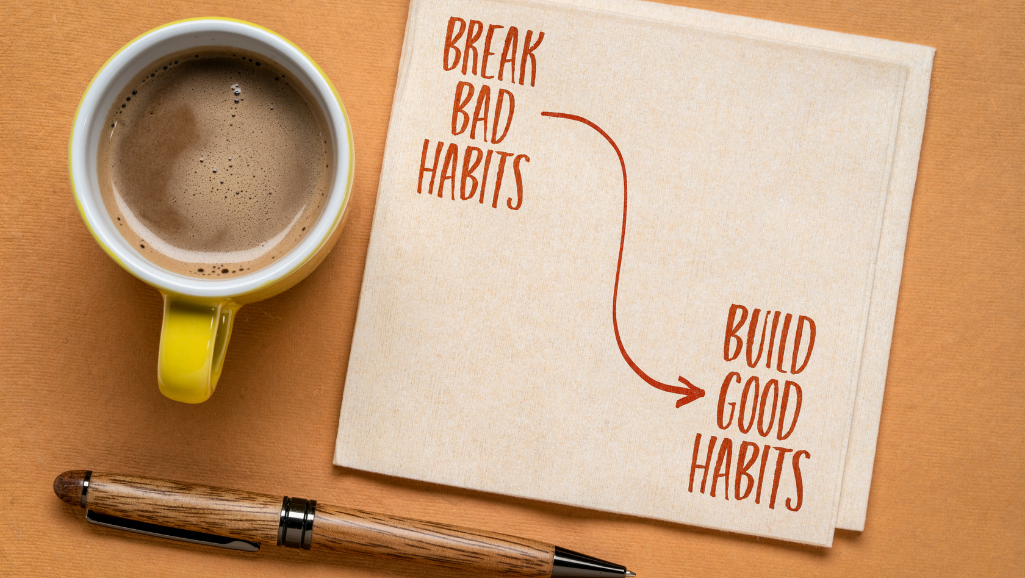Creating lasting change in your life starts with small, consistent actions. Instead of focusing on distant goals, it’s the systems you build that truly drive progress. James Clear, author of the bestselling book Atomic Habits, emphasizes this revolutionary idea. By focusing on daily routines, you can achieve remarkable results over time.
Think of it this way: athletes and entrepreneurs don’t succeed overnight. They rely on consistent practices and routines. For example, reading just 10 minutes a day can lead to finishing 18 books in a year. These small actions, when repeated, compound into significant achievements.
The key is to start small and stay consistent. Missing a day won’t derail your progress, but sticking to your routine will. By adopting this mindset, you can design a process that works for you and leads to lasting success.
Key Takeaways
- Your Guide to Building Atomic Habits Systems.
- Focus on systems, not just goals, for lasting change.
- Small, consistent actions compound over time.
- James Clear’s ideas highlight the power of daily routines.
- Real-life examples show how habits drive success.
- Consistency is more important than perfection.
Understanding Atomic Habits Systems
True transformation begins with understanding the difference between goals and systems. While goals provide direction, systems are the steps you take daily to achieve them. As James Clear explains, “You do not rise to the level of your goals. You fall to the level of your systems.”
Exploring the Concept: Goals Versus Systems
Goals are the outcomes you want, like winning a championship or launching a business. Systems, on the other hand, are the processes that get you there. For example, a basketball coach’s goal might be to win a game, but their system includes daily practice drills and strategy sessions.
Winners and losers often set the same goals. What sets them apart is the system they follow. Bill Walsh, the legendary football coach, once said,
“The score takes care of itself.”
This emphasizes focusing on the process rather than the result.
Why Focusing on Systems Leads to Lasting Change
Goals can lead to momentary changes, but systems create lasting improvement. For instance, many runners stop training after completing a marathon, only to revert to old habits. Systems, however, keep you moving forward every day.
Small, consistent actions compound over time. The British Cyclists achieved unprecedented success by focusing on continuous small improvements, not just the goal of winning the Tour de France. This approach transformed their performance.
By rethinking motivation and process, you can achieve life-changing results. As James Clear suggests, the key is to build a system that works for you, one step at a time.
Designing Your Habit Formation Process

Success is often the result of tiny, repeated efforts. To create lasting change, focus on building a process that works for you. Start small, stay consistent, and watch your progress grow over time.
Starting Small: The Power of Consistent Daily Actions
Big goals can feel overwhelming. Instead, break them into small, manageable steps. For example, if you want to read a book, start with just one page a day. Over time, these small actions compound into significant results.
James Clear’s “two-minute rule” is a great example. Scale down your desired habit to something that takes just two minutes. This reduces intimidation and makes it easier to stick with it.
Setting Up Your Environment for Success
Your surroundings play a huge role in shaping your habits. Make good habits obvious and bad ones harder to follow. For instance, place your gym clothes by the door to make working out easier.
Reducing friction for good habits and increasing it for bad ones can transform your behavior. Small changes in your environment can lead to big results.
Temptation Bundling and Rewarding Progress
Pair necessary habits with enjoyable activities. For example, listen to your favorite podcast while exercising. This makes the habit more attractive and easier to maintain.
Rewarding yourself for progress is also key. Track your habits and celebrate small wins. This keeps you motivated and focused on the long-term goal.
As James Clear says,
“Make it obvious, make it attractive, make it easy, and make it satisfying.”
These principles can guide you in designing asystemthat works.
Mastering Atomic Habits Systems for Lasting Change

The secret to long-term success lies in the way you approach your daily tasks. Instead of fixating on the end result, focus on the process that gets you there. As James Clear explains, “You do not rise to the level of your goals. You fall to the level of your systems.” This mindset shift is the foundation of creating lasting change.
Step-by-Step Strategies Inspired by James Clear
Start by breaking down your goal into small, actionable steps. For example, if you want to write a book, commit to writing just 100 words a day. Over time, these small efforts compound into significant results.
James Clear’s “two-minute rule” is a powerful tool. Scale down your desired habit to something that takes just two minutes. This reduces intimidation and makes it easier to stick with it.
Here’s a simple framework to follow:
- Make it obvious: Design your environment to support your habit.
- Make it attractive: Pair the habit with something enjoyable.
- Make it easy: Reduce friction to start the habit.
- Make it satisfying: Reward yourself for progress.
Transforming Your Life Through Process Over Outcome
Focusing on the process rather than the goal ensures continuous improvement. Bill Walsh, the legendary football coach, once said,
“The score takes care of itself.”
This emphasizes the importance of daily actions over the final result.
For instance, instead of aiming to lose 20 pounds, focus on eating one healthy meal a day. Small, consistent actions lead to big changes over time.
By rethinking your approach to motivation and reward, you can create a system that works for you. Celebrate small wins and track your progress to stay motivated.
Remember, the key to lasting change is not perfection but consistency. Commit to the process, and the results will follow.
Real-Life Applications and Creative Systems in Action

From sports to business, systems drive extraordinary results. Whether it’s a professional athlete or a successful entrepreneur, their achievements are built on consistent routines and actionable plans. Let’s explore how these principles apply across different fields.
Practical Examples from Sports, Business, and Creativity
In sports, teams like the British Cyclists transformed their performance by focusing on small, incremental improvements. Their system of continuous progress led to multiple Tour de France victories. Similarly, businesses like Amazon thrive by prioritizing customer-centric processes over short-term goals.
Creative professionals also benefit from structured routines. Authors like Stephen King commit to writing a set number of pages every day. This disciplined approach ensures steady progress toward completing a book.
Integrating Multiple Systems for Creative Momentum
Combining different systems can amplify results. For instance, a fitness enthusiast might pair morning workouts with journaling to track progress. This creates a chain reaction where one habit triggers another, building momentum over time.
As James Clear says,
“Success is the product of daily habits, not once-in-a-lifetime transformations.”
By designing your environment to support these routines, you can achieve sustainable progress in any area of life.
Small, consistent actions compound into significant change. Whether it’s writing a page a day or scheduling creative sessions, the key is to stay committed to the process. Celebrate small wins and let them fuel your journey toward long-term success.
Conclusion
Transforming your life begins with focusing on the process, not just the outcome. As James Clear emphasizes, small, consistent actions compound over time, leading to remarkable results. By shifting your mindset from goals to systems, you create a foundation for lasting change.
Throughout this article, we’ve explored how daily actions, like reading a page or writing a few words, can lead to significant progress over a year. The key is to make these actions obvious, attractive, easy, and satisfying. This approach reduces pressure and builds intrinsic motivation.
Start today. Take one small step, and let it build momentum. Remember, success isn’t about perfection but consistency. As you embrace this idea, you’ll see how even the smallest adjustments can create a lot of impact over time.
Thank you for joining this journey. Now, it’s your turn to experiment, grow, and thrive. Focus on the process, and the results will follow. Your best life is built one day at a time.







